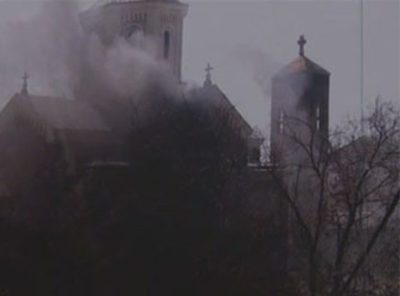Today Marks 19th Anniversary of Anti-Serb Pogrom in Kosovo-Metohija

All Global Research articles can be read in 51 languages by activating the Translate Website button below the author’s name.
To receive Global Research’s Daily Newsletter (selected articles), click here.
Follow us on Instagram and Twitter and subscribe to our Telegram Channel. Feel free to repost and share widely Global Research articles.
***
Kosovo-Metohija Serbs were targeted by a pogrom 19 years ago on March 17-19, 2004.
It was the second largest pogrom Serbs in the province suffered at the hands of ethnic Albanians after the end of the 1999 NATO aggression on Serbia, then part of the Federal Republic of Yugoslavia.
Previously, approximately a quarter of a million Serbs and other non-Albanians were expelled from Kosovo-Metohija in June 1999 in the presence of international troops.
The March 2004 Kristallnacht-like violence targeted the Serbs and their property, holy sites, churches and monuments.
As a result, 4,012 Serbs were expelled from Kosovo-Metohija, and most of them never returned to their homes.
During the March 2004 violence, at least 27 people were killed – including 16 Serbs, as well as 11 ethnic Albanians who lost their lives in clashes with international forces.
Hundreds of people were injured.
In the evening of March 16, 2004, Pristina media reported that three ethnic Albanian boys had drowned in the Ibar River in a village near Zubin Potok while allegedly trying to escape attackers who were Serbs.
On the following day, thousands of ethnic Albanians crossed into the north of Kosovska Mitrovica via a bridge on the Ibar to attack local Serbs.
Gunfire began, and ethnic Albanians armed with automatic weapons were seen in the town.
Attacks, burning and looting followed in other Serb communities in the province.
Later in the day, UNMIK spokesperson Derek Chappell refuted the accusations that the ethnic Albanian boys had died while running away from Serbs – the pretext for the anti-Serb pogrom.
He said the violence had been planned beforehand.
NATO Allied Joint Force Command Naples Commander Adm Gregory Johnson branded the mass violence against Serbs as ethnic cleansing.
The mob destroyed 935 Serb homes and burned down 35 Serbian Orthodox holy sites, including 18 cultural monuments.
One of them is the medieval Church of Our Lady of Ljevis in Prizren, subsequently included in the list of UNESCO-protected monuments.
According to information released by the Serbian Orthodox Eparchy of Raska and Prizren, the number of church buildings destroyed in the March 2004 pogrom is close to one hundred.
*
Note to readers: Please click the share buttons above. Follow us on Instagram and Twitter and subscribe to our Telegram Channel. Feel free to repost and share widely Global Research articles.
Featured image is from Tanjug

